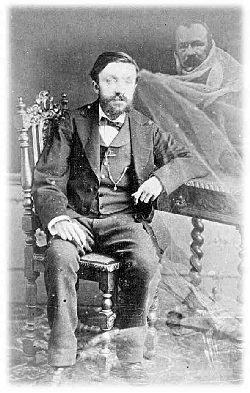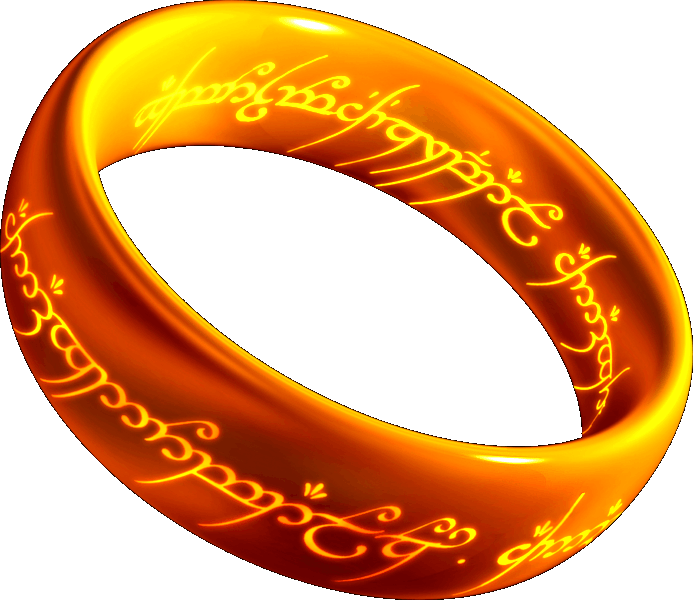|
Dactylomancy
Dactylomancy, from the Greek word for finger, is a term used by proponents to define a form of divination using rings.Jacob, P. L. (1878) "Science and Literature in the Middle Ages, and at the Period of the Renaissance", Bickers and Son Modern dactylomancy In some traditions of dactylomancy, a ring is suspended like a pendulum above a surface that is marked with letters or symbols. The direction of the swing indicates which symbols are to be consulted, or which letter are to be formed into a message, in answer to a specific question.Spence, Lewis (2003), "Encyclopedia of Occultism and Parapsychology", Kessinger Publishing, Cunningham, Scott (2003), "Divination for Beginners: Reading the Past, Present & Future", Llewellyn Worldwide, Another tradition follows the same pattern as Séance table-rapping. In it a ring is suspended from a tumbler so that it may touch the sides if swung and a code is agreed upon (e.g., 1 for yes, 2 for no). A question is then posed and the number of ... [...More Info...] [...Related Items...] OR: [Wikipedia] [Google] [Baidu] |
Divination
Divination (from Latin ''divinare'', 'to foresee, to foretell, to predict, to prophesy') is the attempt to gain insight into a question or situation by way of an occultic, standardized process or ritual. Used in various forms throughout history, diviners ascertain their interpretations of how a querent should proceed by reading signs, events, or omens, or through alleged contact or interaction with a supernatural agency. Divination can be seen as a systematic method with which to organize what appears to be disjointed, random facets of existence such that they provide insight into a problem at hand. If a distinction is to be made between divination and fortune-telling, divination has a more formal or ritualistic element and often contains a more social character, usually in a religious context, as seen in traditional African medicine. Fortune-telling, on the other hand, is a more everyday practice for personal purposes. Particular divination methods vary by culture and reli ... [...More Info...] [...Related Items...] OR: [Wikipedia] [Google] [Baidu] |
Ring (jewellery)
A ring is a round band, usually made of metal, worn as ornamental jewelry. The term "ring" by itself always denotes jewellery worn on the finger; when worn as an ornament elsewhere, the body part is specified within the term, e.g., earrings, neck rings, arm rings, and toe rings. Rings always fit snugly around or in the part of the body they ornament, so bands worn loosely, like a bracelet, are not rings. Rings may be made of almost any hard material: wood, bone, stone, metal, glass, gemstone or plastic. They may be set with gemstones (diamond, ruby, sapphire or emerald) or with other types of stone or glass. Although some people wear rings as mere ornaments or as conspicuous displays of wealth, rings have symbolic functions respecting marriage, exceptional achievement, high status or authority, membership in an organization, and the like. Rings can be made to sport insignia which may be impressed on a wax seal or outfitted with a small compartment in which to conceal things. In m ... [...More Info...] [...Related Items...] OR: [Wikipedia] [Google] [Baidu] |
Séance
A séance or seance (; ) is an attempt to communicate with spirits. The word ''séance'' comes from the French word for "session", from the Old French ''seoir'', "to sit". In French, the word's meaning is quite general: one may, for example, speak of "''une séance de cinéma''" ("a movie session"). In English, however, the word came to be used specifically for a meeting of people who are gathered to receive messages from ghosts or to listen to a spirit medium discourse with or relay messages from spirits. In modern English usage, participants need not be seated while engaged in a séance. Fictionalised conversations between the deceased appeared in ''Dialogues of the Dead'' by George, First Baron Lyttelton, published in England in 1760. Among the notable spirits quoted in this volume are Peter the Great, Pericles, a "North-American Savage", William Penn, and Christina, Queen of Sweden. The popularity of séances grew dramatically with the founding of the religion of Spiritualis ... [...More Info...] [...Related Items...] OR: [Wikipedia] [Google] [Baidu] |
Spiritualism
Spiritualism is the metaphysical school of thought opposing physicalism and also is the category of all spiritual beliefs/views (in monism and dualism) from ancient to modern. In the long nineteenth century, Spiritualism (when not lowercase) became most known as a social religious movement according to which the laws of nature and of God include "the continuity of consciousness after the transition of death" and "the possibility of communication between those living on Earth and those who have made the transition". The afterlife, or the " spirit world", is seen by spiritualists not as a static place, but as one in which spirits continue to evolve. These two beliefs—that contact with spirits is possible, and that spirits are more advanced than humans—lead spiritualists to a third belief: that spirits are capable of providing useful insight regarding moral and ethical issues, as well as about the nature of God. Some spiritualists will speak of a concept which they refer ... [...More Info...] [...Related Items...] OR: [Wikipedia] [Google] [Baidu] |
New Age
New Age is a range of spiritual or religious practices and beliefs which rapidly grew in Western society during the early 1970s. Its highly eclectic and unsystematic structure makes a precise definition difficult. Although many scholars consider it a religious movement, its adherents typically see it as spiritual or as unifying Mind-Body-Spirit, and rarely use the term ''New Age'' themselves. Scholars often call it the New Age movement, although others contest this term and suggest it is better seen as a ''milieu'' or ''zeitgeist''. As a form of Western esotericism, the New Age drew heavily upon esoteric traditions such as the occultism of the eighteenth and nineteenth centuries, including the work of Emanuel Swedenborg and Franz Mesmer, as well as Spiritualism, New Thought, and Theosophy. More immediately, it arose from mid-twentieth century influences such as the UFO religions of the 1950s, the counterculture of the 1960s, and the Human Potential Movement. Its exact origins ... [...More Info...] [...Related Items...] OR: [Wikipedia] [Google] [Baidu] |
Parapsychology
Parapsychology is the study of alleged psychic phenomena (extrasensory perception, telepathy, precognition, clairvoyance, psychokinesis (also called telekinesis), and psychometry) and other paranormal claims, for example, those related to near-death experiences, synchronicity, apparitional experiences, etc. Criticized as being a pseudoscience, the majority of mainstream scientists reject it. Parapsychology has also been criticised by mainstream critics for many of its practitioners claiming that their studies are plausible in spite of there being no convincing evidence for the existence of any psychic phenomena after more than a century of research. Parapsychology research rarely appears in mainstream scientific journals; instead, most papers about parapsychology are published in a small number of niche journals. Terminology The term ''parapsychology'' was coined in 1889 by philosopher Max Dessoir as the German . It was adopted by J. B. Rhine in the 1930s as a replacement fo ... [...More Info...] [...Related Items...] OR: [Wikipedia] [Google] [Baidu] |
Magic Ring
A magic ring is a mythical, folkloric or fictional piece of jewelry, usually a Ring (jewellery), finger ring, that is purported to have Magic (supernatural), supernatural properties or powers. It appears frequently in fantasy and fairy tales. Magic rings are found in the folklore of every country where rings are worn. Some magic rings can endow the wearer with a variety of abilities including invisibility and immortality. Others can grant wishes or spells such as neverending love and happiness. Sometimes, magic rings can be cursed, as in the mythical ring that was recovered by Sigurd from the hoard of the dragon Fafnir in Norse mythology or the fictional ring that features in ''The Lord of the Rings''. More often, however, they are featured as forces for good, or as a neutral tool whose value is dependent upon the wearer. A finger ring is a convenient choice for a magic item: It is ornamental, distinctive and often unique, a commonly worn item, of a shape that is often endowed w ... [...More Info...] [...Related Items...] OR: [Wikipedia] [Google] [Baidu] |
Divination
Divination (from Latin ''divinare'', 'to foresee, to foretell, to predict, to prophesy') is the attempt to gain insight into a question or situation by way of an occultic, standardized process or ritual. Used in various forms throughout history, diviners ascertain their interpretations of how a querent should proceed by reading signs, events, or omens, or through alleged contact or interaction with a supernatural agency. Divination can be seen as a systematic method with which to organize what appears to be disjointed, random facets of existence such that they provide insight into a problem at hand. If a distinction is to be made between divination and fortune-telling, divination has a more formal or ritualistic element and often contains a more social character, usually in a religious context, as seen in traditional African medicine. Fortune-telling, on the other hand, is a more everyday practice for personal purposes. Particular divination methods vary by culture and reli ... [...More Info...] [...Related Items...] OR: [Wikipedia] [Google] [Baidu] |








